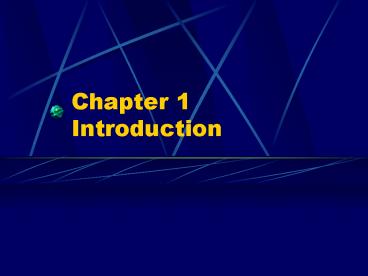Chapter 1 Introduction - PowerPoint PPT Presentation
1 / 17
Title:
Chapter 1 Introduction
Description:
Sectioning: use microtome to cut the tissue into 3-8um thick sections, then monted them on glass s g. H&E staining ---Hematoxylin: basic stain ... – PowerPoint PPT presentation
Number of Views:326
Avg rating:3.0/5.0
Title: Chapter 1 Introduction
1
Chapter 1Introduction
2
- I. Whats histology?
- II. Why we study it ?
- III. How to study it ?-Histological methods.
3
- I. Whats histology?
- Histology (Greek words)
- /histo-tissue
- /logia-study of ,or knowledge of
- So, histology means the knowledge of tissue, is a
branch of Anatomy. - Anatomy
- ---gross anatomy
- ---microscopic anatomy
- Structures related to function. So, exactly,
Histology is a science which study the
microstructure and the relationship between the
structure and function of human being.
4
- Cell smallest unit of structure and function of
body - ?
- tissue group of cellextracellular ground
substance - four basic tissue
- ---epithelium
- ? ---connective tissue
- ---muscular tissue
- ---nervous tissue
- organ made up of tissue, have special shape,
structure and function - ?
- system organs Which have related function get
together.
5
- II.Whats Embryology?
- Embryology is a kind of science which
study the processes and the regulations of the
development of human fetus.
6
- III. How to study it- histological methods
- ---Development of histology deponds on the
development of technique. - ---Histology studies the microstructures. So, we
should have the aid of microscope to study.
Several types of microscopes are available.
According to the light source used, microscopes
can be basally classified as - light microscope(LM)
- electron microscope(EM)
7
- 1. structure of Microscope
- LM
EM - ---useful magnification 1500X
800,000X - ---resolution 0.2um
0.2nm
8
- 2. Preparation of tissue for LM
- The most routine one is paraffin section stained
with hematoxylin and eosin(HE) - The steps
- a. Obtaining th specimen fresh, small pieces (
less than 5mm3)-tissue block - b. Fixation fixatives use formalin or Bouins
to preserve structural organisation - c. Dehydration use ethyl alcohol to get rid of
water of tissue and cell
9
- d. Clearing use xylene to get rid of alcohol
- alcohol and xylene are embedding mediums
- e. Embedding firstly, heat the paraffin, make
it melt, then put tissue block into melted
paraffin, allow paraffin harden, the tissue block
is embedded in.
10
- f. Sectioning use microtome to cut the tissue
into 3-8um thick sections, then monted them on
glass slides - g. HE staining
- ---Hematoxylin basic stain, combines with acidic
components, make them appear blue colour- we call
such components as basophilic - ---Eosin acidic stain, combines with basic
components, make them appear pink colour- we call
such components as acidophilic(eosinophilic)
11
- 3. Preparation of tissue for EM
- The steps are same to preparation for LM
- a. tissue block more small, less than 1mm3
- b. plastic materials for embedding
- c. ultra-thin sections is about 30-50nm thick(
use ultramicrotome) - d. heavy metal salts- increase staining
contrast - ---lead citrate
- ---uranyl acatate
12
- e. the beam of electron replace the light to
illuminate the tissue sections - Beam of electron illuminate the tissue
section, we use a screen to receive the electron.
In some areas, the beam of electron is impeded by
those tissue element which are stained with heavy
metal salts, so very few electrons penetrate to
excite the screen, such areas appear dark, are
described as electron-dense areas. Unstained
areas, by contrast, appear light, we call them as
electron-lucent areas.
13
- 4. Histochemistry
- 1) General Histochemistry
- Combine histological methods with chemical
or biochemical methods, make some compositions of
tissue or cell become insoluble, coloured or
electron-dense,, to show those chemical
compositions of tissue or cell in situ, such
compositions includes protein,amino acid, nucleic
acid, lipid and enzymes.
14
- Periodic acid schiff reaction(PAS reaction)
- HIO4 schiffs
reagent(colourless) - Polysaccharides ? aldehydes ?
magenta comples - Glycogen oxidize combine
(purple red coloured)
15
- 2) immnohistochemistry antigen-antibody
16
(No Transcript)
17
- 3) in situ hybridization nucleic acid
DNA(desoxyribose nucleic acid) RNA(ribose nucleic
acid)






























